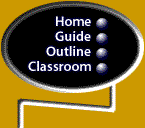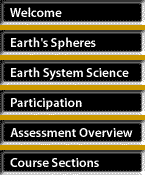 |
 |
 |
 |

Week C: Teacher As Designer—Individual
Lesson Design Assignment
& Rubric
Weeks 6, 9, 12 and 15
Goals:
To individually design a lesson for your students about this cycle’s
sphere and post it for feedback from your teammates.
Background:
As an instructional designer, you create a plan and then refine your ideas,
often by working with your colleagues. Begin Week C of each cycle by reviewing
the questions, activities, and content you have collected in Weeks A and
B. Then design or locate a sphere lesson that meets your team’s criteria
for effective concept-building activities and the rubric located at the
bottom of this page.
Use the directions below to
complete this week’s individual assignment.
|
Assignment
(by Wednesday)
Posting
Instructions for step 1
Go
to the Classroom, then
to Teacher As Designer. |
1. Individually
design or find a sphere lesson for your students and post it in
Teacher As Designer space for feedback from your teammates. Make
sure your sphere lesson follows the criteria stated in the rubric
at the bottom of this page and also uses the criteria for effective
concept-building activities you and your teammates agreed on in
Week A: Teacher As Researcher.
Remember that
the sphere lessons you create may be used in the
Final Project you complete in Week 16. You may want to identify
a central idea for your Final Project before you create your sphere
lessons.
Posting
Instructions for step 2
Go
to the Classroom, then to Portfolio Space. |
2. Go
to your portfolio in the Classroom to make links from your portfolio
to your sphere lesson.
|
Rubric
You and your facilitator
will use the rubric below to gauge your success in designing a sphere
lesson. You may have additional criteria from your Week A team assignment
to add to the criteria below.
| Rubric
Criteria: Goals:
Focused by clear goals (in developmentally appropriate student language)
in the form of essential questions, a problem, or goal statements.
|
4
Rating:
Clearly
stated, understandable and engaging to your students.
|
3
Rating:
Clearly
stated and understandable to your students.
|
2
Rating:
Understandable
to your students.
|
1
Rating:
Goals
are stated. |
| Rubric
Criteria: Activities:
Built around activities that draw out what students know, cause them
to rethink misconceptions, and make their thinking visible.
|
4
Rating:
Activities
are powerful in drawing out what students know, in causing them to
identify and rethink misconceptions, and in making their thinking
visible.
|
3
Rating:
Activities
are designed to draw out what students know, cause them to rethink
misconceptions, and to think out loud.
|
2
Rating:
Activities
are designed to cause students to rethink misconceptions.
|
1
Rating:
Activities
are designed to engage students in thinking. |
| Rubric
Criteria: Assessment:
Will result in measurable changes in student concept development in
Earth system science. |
4
Rating:
Assessment
is ongoing and standards-based, involving students in seeing their
own growth.
|
3
Rating:
Assessment
is ongoing and standards-
based. |
2
Rating:
Assessment
is ongoing. |
1
Rating:
Assessment
is standards-
based. |
[
Back ]
[
Welcome ] [Earth's Spheres
] [ Earth System Science ] [ Participation
]
[ Assessment Overview ] [ Course
Sections ]
[ Home ] [
Guide ] [ Outline ] [
Classroom ]
|
 |
 |




|
 |